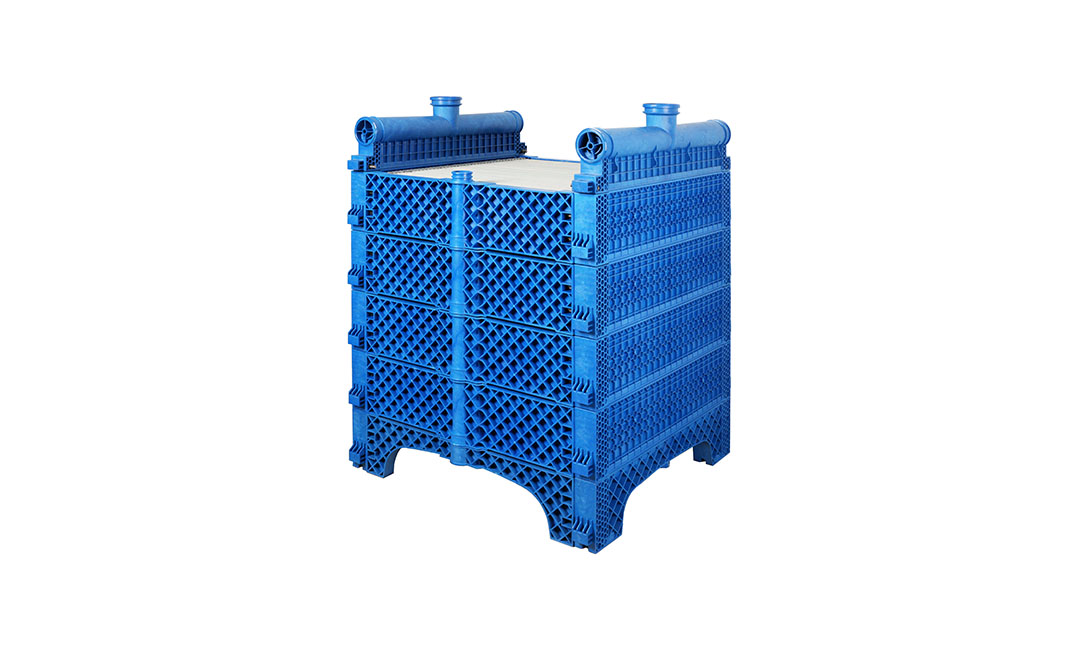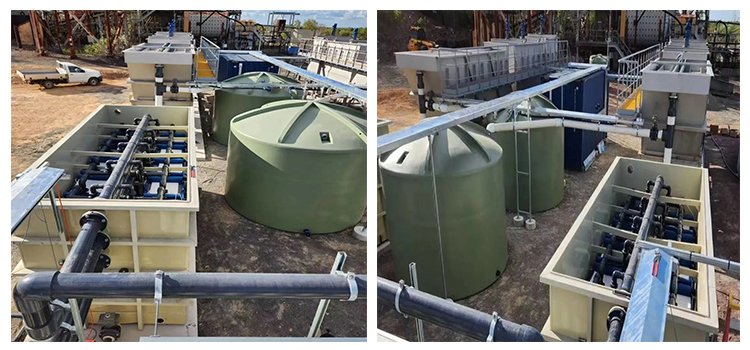Benefits of Using SiC Membranes in Biogas Upgrading
Biogas, a renewable energy source produced from organic waste, is gaining popularity as a sustainable alternative to fossil fuels. However, before biogas can be used as a clean energy source, it must undergo a purification process to remove impurities such as carbon dioxide, hydrogen sulfide, and moisture. One of the most effective methods for biogas upgrading and purification is the use of silicon carbide (SiC) membranes.
SiC membranes are a type of ceramic membrane that offer several advantages over traditional polymeric membranes. One of the key benefits of SiC membranes is their high chemical and thermal stability, making them ideal for use in harsh environments such as biogas upgrading plants. Additionally, SiC membranes have a high permeability to gases, allowing for efficient separation of impurities from the biogas stream.
Another advantage of SiC membranes is their long lifespan and low maintenance requirements. Unlike polymeric membranes, which can degrade over time and require frequent replacement, SiC membranes are highly durable and can withstand prolonged exposure to corrosive gases without losing their effectiveness. This results in lower operating costs and reduced downtime for biogas upgrading facilities.
In addition to their durability and efficiency, SiC membranes also offer superior selectivity for gas separation. This means that SiC membranes can effectively separate carbon dioxide, hydrogen sulfide, and other impurities from the biogas stream, resulting in a purified gas product that meets the quality standards for use in power generation, heating, or transportation.
Furthermore, SiC membranes are highly resistant to fouling, a common issue in membrane separation processes. Fouling occurs when impurities in the biogas stream accumulate on the membrane surface, reducing its effectiveness and requiring frequent cleaning or replacement. SiC membranes have a smooth, non-porous surface that resists fouling, allowing for continuous operation and consistent performance over time.
Overall, the use of SiC membranes in biogas upgrading and purification offers numerous benefits, including high chemical and thermal stability, long lifespan, low maintenance requirements, superior selectivity, and resistance to fouling. These advantages make SiC membranes an attractive option for biogas producers looking to improve the quality and efficiency of their biogas production process.
In conclusion, SiC membranes play a crucial role in the biogas upgrading and purification process, offering a reliable and cost-effective solution for removing impurities from biogas streams. With their high performance and durability, SiC membranes are helping to drive the growth of the biogas industry and contribute to a more sustainable energy future.
Applications of SiC Membranes in Biogas Purification
Biogas, a renewable energy source produced from organic waste, is gaining popularity as a sustainable alternative to fossil fuels. However, before biogas can be used as a clean energy source, it must undergo a purification process to remove impurities such as carbon dioxide, hydrogen sulfide, and moisture. One of the key technologies used in biogas purification is membrane separation, and silicon carbide (SiC) membranes have emerged as a promising solution for this application.
SiC membranes offer several advantages over traditional polymeric membranes, including higher chemical and thermal stability, superior mechanical strength, and resistance to fouling. These properties make SiC membranes well-suited for the harsh operating conditions typically encountered in biogas purification processes. Additionally, SiC membranes have a high selectivity for carbon dioxide, enabling efficient separation of this impurity from the biogas stream.
In biogas upgrading processes, SiC membranes are used to selectively remove carbon dioxide from the biogas stream, resulting in a purified biogas product with a higher methane content. This purified biogas, also known as biomethane, can be used as a renewable fuel for vehicles, heating, and electricity generation. By upgrading biogas using SiC membranes, the overall energy efficiency of the biogas production process is improved, leading to a more sustainable and cost-effective energy source.
Furthermore, SiC membranes can also be used in biogas purification processes to remove hydrogen sulfide, a corrosive and toxic gas that can damage equipment and pose health risks. By selectively removing hydrogen sulfide using SiC membranes, the purity of the biogas stream is increased, ensuring the safety and reliability of downstream processes and equipment.
In addition to their applications in biogas purification, SiC membranes can also be used in biogas desulfurization processes to remove sulfur compounds such as hydrogen sulfide and mercaptans. These sulfur compounds are responsible for the characteristic foul odor of biogas and can cause environmental pollution and health hazards. By using SiC membranes to selectively remove sulfur compounds from the biogas stream, the odor and environmental impact of biogas can be significantly reduced, making it a more attractive and sustainable energy source.
Overall, SiC membranes play a crucial role in biogas upgrading and purification processes, enabling the production of high-purity biomethane for use as a clean and renewable energy source. With their superior chemical and thermal stability, high selectivity for carbon dioxide, and resistance to fouling, SiC membranes offer a reliable and cost-effective solution for biogas purification applications. By harnessing the potential of SiC membranes in biogas purification processes, we can accelerate the transition to a more sustainable and environmentally friendly energy future.
Future Developments in SiC Membrane Technology for Biogas Upgrading
Biogas, a renewable energy source produced from organic waste, is gaining popularity as a sustainable alternative to fossil fuels. However, before biogas can be used as a clean energy source, it must undergo a purification process to remove impurities such as carbon dioxide, hydrogen sulfide, and moisture. One of the key technologies used in biogas upgrading and purification is the use of membranes, specifically silicon carbide (SiC) membranes.
SiC membranes have emerged as a promising solution for biogas upgrading due to their high chemical and thermal stability, as well as their excellent separation efficiency. These membranes are made from a material known for its durability and resistance to harsh operating conditions, making them ideal for use in biogas purification systems. SiC membranes can effectively separate carbon dioxide and hydrogen sulfide from biogas, resulting in a purified gas stream that can be used for power generation or injected into natural gas pipelines.

One of the main advantages of SiC membranes is their high selectivity, which allows for the efficient separation of gases while minimizing energy consumption. This is crucial in biogas upgrading processes, where energy efficiency is a key consideration. By using SiC membranes, biogas producers can achieve higher purity levels in the upgraded gas stream while reducing operating costs and energy consumption.
Another benefit of SiC membranes is their long lifespan and low maintenance requirements. Unlike traditional separation technologies such as amine scrubbing or pressure swing adsorption, SiC membranes do not require frequent replacement or regeneration, resulting in lower overall operating costs. This makes SiC membranes a cost-effective solution for biogas upgrading and purification, especially for large-scale biogas plants.

In addition to their high performance and durability, SiC membranes also offer flexibility in design and operation. These membranes can be customized to meet specific process requirements, allowing for the optimization of biogas upgrading systems. Whether it is a small-scale biogas plant or a large industrial facility, SiC membranes can be tailored to suit the needs of the application, making them a versatile solution for biogas purification.
Looking ahead, the future of SiC membrane technology in biogas upgrading looks promising. Researchers and manufacturers are continuously working to improve the performance and efficiency of SiC membranes, with a focus on reducing costs and increasing scalability. New developments in membrane design and manufacturing processes are expected to further enhance the capabilities of SiC membranes, making them even more competitive with traditional separation technologies.
As the demand for clean energy sources continues to grow, the role of SiC membranes in biogas upgrading and purification will become increasingly important. With their high selectivity, durability, and flexibility, SiC membranes offer a reliable and cost-effective solution for producing high-purity biogas. By leveraging the benefits of SiC membranes, biogas producers can contribute to a more sustainable energy future while reducing their environmental impact.

